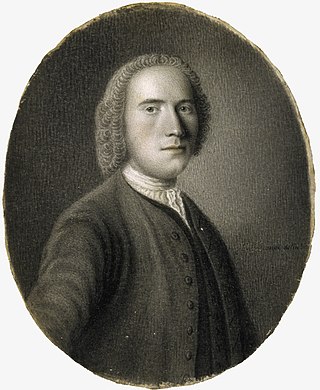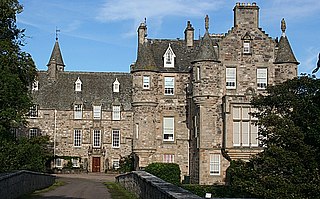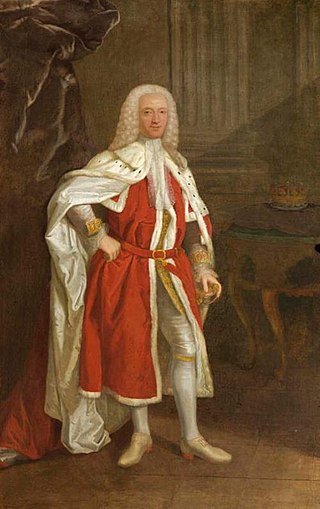
Jacobitism was a political ideology advocating the restoration of the Catholic House of Stuart to the British throne. When James II of England chose exile after the November 1688 Glorious Revolution, the Parliament of England ruled he had "abandoned" the English throne, which was given to his Protestant daughter Mary II of England, and her husband William III. On the same basis, in April the Scottish Convention awarded Mary and William the throne of Scotland.

Charles Edward Louis John Sylvester Maria Casimir Stuart was the elder son of James Francis Edward Stuart making him the grandson of James VII and II, and the Stuart claimant to the thrones of England, Scotland, and Ireland from 1766 as Charles III. During his lifetime, he was also known as "the Young Pretender" and "the Young Chevalier"; in popular memory, he is known as Bonnie Prince Charlie.

James Francis Edward Stuart, nicknamed the Old Pretender by Whigs and the King over the Water by Jacobites, was the son of King James VII and II of England, Scotland, and Ireland, and his second wife, Mary of Modena. He was Prince of Wales from July 1688 until, just months after his birth, his Catholic father was deposed and exiled in the Glorious Revolution of 1688. James II's Protestant elder daughter Mary II and her husband William III became co-monarchs. The Bill of Rights 1689 and Act of Settlement 1701 excluded Catholics such as James from the English and British thrones.

Carolina Oliphant, Lady Nairne – also known as Carolina Baroness Nairn in the peerage of Scotland and Baroness Keith in that of the United Kingdom – was a Scottish songwriter. Many of her songs, such as, "Will ye no' come back again?", "Charlie is my Darling", "The Rowan Tree" and "Wi' a Hundred Pipers' remain popular today, almost two hundred years after they were written. One of her songs, "Caller Herrin'", was sung at the 2021 commemoration of the 1881 Eyemouth disaster. She usually set her words to traditional Scottish folk melodies, but sometimes contributed her own music.

Clan Gordon is a Highland Scottish clan, historically one of the most powerful Scottish clans. The Gordon lands once spanned a large territory across the Highlands. Presently, Gordon is seated at Aboyne Castle, Aberdeenshire. The Chief of the clan is the Earl of Huntly, later the Marquess of Huntly.

Lord George Murray, sixth son of John Murray, 1st Duke of Atholl, was a Scottish nobleman and soldier who took part in the Jacobite rebellions of 1715 and 1719 and played a senior role in that of 1745.

Clan Menzies ; Scottish Gaelic: Clann Mèinnear; a member is a Mèinnearach) is a Highland Scottish clan.
John Alexander was a Scottish painter and engraver of the 18th century. He studied in Italy under Giuseppe Bartolomeo Chiari.
William Gordon, 2nd Earl of Aberdeen, known between c. 1691 and 1720 as Lord Haddo, was a Scottish landowner and Tory politician who sat in the British House of Commons briefly from 1708 to 1709 when he was declared ineligible, being the eldest son of a Scottish peer. He showed some Jacobite sympathies, but took no part in the rebellions.
Peter Grant may refer to:

The Battle of Inverurie was fought on 23 December 1745 at Inverurie, Aberdeenshire, Scotland, during the Jacobite rising of 1745.

William Drummond, 4th Viscount Strathallan, was a Scottish peer and Jacobite, who died at the Battle of Culloden.

The Tolbooth in Aberdeen, Scotland is a 17th-century former jail which is now operated as a museum. The museum contains prison cells and exhibits various police and law and order related items. The building has been featured on popular television as the setting for a ghostlore story.

The Jacobite rising of 1745 was an attempt by Charles Edward Stuart to regain the British throne for his father, James Francis Edward Stuart. It took place during the War of the Austrian Succession, when the bulk of the British Army was fighting in mainland Europe, and proved to be the last in a series of revolts that began in March 1689, with major outbreaks in 1715 and 1719.

Cosmo Alexander was a Scottish portrait painter. A supporter of James Edward Stuart's claim to the English and Scottish thrones, Alexander spent much of his life overseas following the defeat of the Jacobite cause in 1745.

The "lost portrait" of Charles Edward Stuart is a portrait, painted in late autumn 1745 by Scottish artist Allan Ramsay, of Charles Edward Stuart, also known as the Young Pretender or Bonnie Prince Charlie.

Duncan Forbes 5th of Culloden was a Scottish lawyer and Whig politician who sat in the House of Commons from 1721 to 1737. As Lord President and senior Scottish legal officer, he played a major role in helping the government suppress the 1745 Jacobite Rising.

Cullen House is a large house, about 1 kilometre (0.6 mi) south-west of the coastal town of Cullen in Moray, Scotland. It was the seat of the Ogilvies of Findlater, who went on to become the Earls of Findlater and Seafield, and it remained in their family until 1982. Building work started on the house in 1600, incorporating some of the stonework of an earlier building on the site. The house has been extended and remodelled several times by prominent architects such as James Adam, John Adam, and David Bryce. It has been described by the architectural historian Charles McKean as "one of the grandest houses in Scotland" and is designated a Category A listed building. The grounds were enlarged in the 1820s when the entire village of Cullen, save for Cullen Old Church, was demolished to make way for improvements to the grounds by Ludovick Ogilvy-Grant, 5th Earl of Seafield; a new village, closer to the coast, was constructed for the inhabitants. Within the grounds are a bridge, a rotunda and a gatehouse, each of which is individually listed as a Category A structure.

An Incident in the Rebellion of 1745 is an oil painting painted by Swiss-born artist David Morier sometime between 1746 and 1765. It is currently part of the art collection of the British royal family. The painting depicts a scene during the 1746 Battle of Culloden, in which a group of Jacobite Army troops charge against a line of government soldiers.

James Ogilvy, 5th Earl of Findlater and 2nd Earl of Seafield was a Scottish peer.
![Patrick Grant [Padraig Grannd an Dubh-bhruaich], 1713 / 1714 - 1824, by Colvin Smith, 1822 Colvin Smith, Patrick Grant.jpg](http://upload.wikimedia.org/wikipedia/commons/thumb/a/ac/Colvin_Smith%2C_Patrick_Grant.jpg/220px-Colvin_Smith%2C_Patrick_Grant.jpg)














